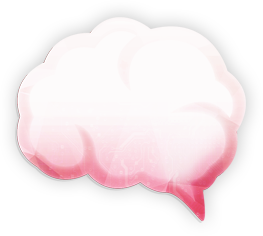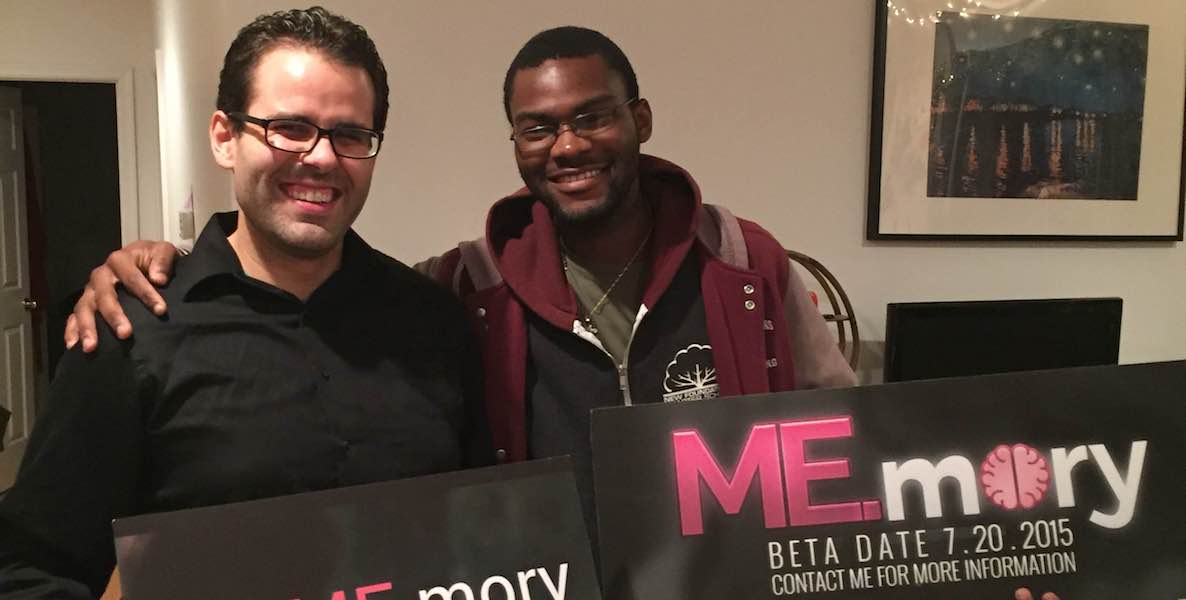There’s a saying about health, that you don’t know that you have it until it’s gone. Some things are so innate in us that we don’t really pay them any mind until something is fabulously wrong, until things are disrupted. We’re shocked and dismayed when we have a fever, we’re thrown for a loop when we get a headache. When we get a toothache, it’s unbelievable, because our teeth are such painless, important constants. Can you imagine what it would be like to have your memory disrupted in such a way, to have your most important tool irrevocably altered? Can you imagine what you’d do?
It happened to Tom Dixon. Dixon, then a research coordinator at the Children’s Hospital of Pennsylvania and a recent Ursinus College grad, was hit by a car in 2010 while out on a jog. It didn’t take too long for him to recover from the immediate damage—a broken arm, a few dings here and there. But during his recovery, it became apparent that something was off; he’d fall asleep in the hospital, wake up, and ask where he was. He’d sustained a traumatic brain injury, or TBI, that impaired his ability to create new memories of recent events. He had his pre-existing memories, sure, and could remember the big beats of life; but it was impossible for him to recall the events of the present day off the top of his head.
The important things are there—Dixon remembers who he is, where he’s from, and how to use a microwave, for instance—but he is left without the ability to recall the last time he had Chinese food for lunch, the last time he saw his parents or the last movie he watched. Instead, he has had to rely on novel, cumbersome methods of recollection—scouring his Twitter and social media profiles for things he’d written down the day before, and combing through old emails containing vital pieces of information. Dixon found that these methods lacked nuance, and did not give a full feel for past events; through his tweets and emails, he couldn’t necessarily understand the minutiae of things that happened. It was frustrating; his spotty memory didn’t need more confusing holes created by bite-sized chunks of information. He needed a more encompassing kind of digital assistance, something that logged particulars, like an external hard drive for his mind.
ME.mory allows users to create notes about events that occur throughout the day, geolocate them in real time so people know where something occurred, and associate emotions to those notes. Users can utilize tags to identify people in photographs and includes a “to-do” list, a “has-done” list and reminders.
“Twitter is very outward-facing. It didn’t give me the tools that I needed, in terms of long term thought. It didn’t give me the ability to search for ‘John’ from campus, and the last time I saw him,” says Dixon. “I needed to develop something that would allow me to search memories and find my memories.”
Along with Jumpbutton Studios and its founder, Nicodemus Madehdou, Dixon created a kind of homebrew cyborg app he calls ME.mory. Currently available in iPhone and Android for free, ME.mory has a simple interface, and is easy to navigate—it would be difficult even for someone like Dixon to get turned around too quickly inside it. It allows users to create notes about events that occur throughout the day, geolocate them in real time so people know where something occurred, and associate emotions to those notes. If, for example, a user routinely notes that they find someone to be annoying, ME.mory will begin to categorize that person as annoying. ME.mory users can utilize tags, like on Facebook, to identify people in photographs, so Dixon, for example, can take a picture at a meeting and track who he met with, and where. It also includes a “to-do” list, a “has-done” list and reminders. You can use it to craft a reminder to help you get milk, or you can log everything that happens to you over the course of the day; an interface mockup is available at ME.mory’s website.
It’s kind of trite to do the whole “imagine the possibilities” thing with new apps and technologies. That kind of stuff is, after all, the crux of all tech industry jargon. And ME.mory isn’t the first app to help folks track their daily minutiae—Evernote, a planning app with similar, but not as fully-actualized features, comes to mind. But indulge ME.mory for a minute, and meditate on what it was designed for and what it could become. Dixon imagined ME.mory originally as a tool for himself, a man with a very specific brain problem. His new memories were not cloudy or unclear, they just didn’t appear. Functionally, he is starting from zero with ME.mory. He needed an app that would help him seamlessly remember each and every detail of his life.
Now apply the thoroughness of an app designed for a man who can create no new memories to anyone dealing with incremental memory loss, from those with TBI like Dixon to those undergoing chemotherapy to Alzheimer’s patients. Already Dixon, who now spends his time helping develop ME.mory and writing a manuscript about dealing with memory loss, has interfaced with users who have not only used the app to supplement their organic memory, but to keep tabs on kids who suffer from chronic illnesses that need to be kept thoroughly in check.
![]() Jumpbutton’s Madehdou says that prospective investors for ME.mory include “health institutions and tech investors,” and he’s not shy about the potential market share of ME.mory, once the app is fully-developed in the next several months. “The market for ME.mory is as large as the market for Facebook or Twitter,” he says.
Jumpbutton’s Madehdou says that prospective investors for ME.mory include “health institutions and tech investors,” and he’s not shy about the potential market share of ME.mory, once the app is fully-developed in the next several months. “The market for ME.mory is as large as the market for Facebook or Twitter,” he says.
Dixon is easy to talk to and forthcoming about his injury. (Although, somewhat paradoxically, he is quick to tell you that those who have suffered a TBI event are probably not the best to consult about the nature or cause of their injury, considering they aren’t terribly likely to remember it all that well.) He’s a cheery, driven guy, seemingly an optimist. He’s also no intellectual slouch. A MENSAN and a Temple master’s graduate, he used his agro-memory collecting methods to help collect his degree two years ago.
In Madehdou, Dixon found an ambitious kid. And when I say ambitious, I mean ambitious. And when I say kid, I mean kid. Madehdou is 20 now; when he started working on ME.mory, he was all of 18. Jumpbutton has a mess of apps currently available for phones and tablets, mostly bite-sized games, but the studio that Madehdou heads is currently splitting its time between ME.mory and an art game about child abuse that’s he compares to 2015 indie-hit That Dragon, Cancer. ME.mory offered something he looks for when he builds out new programs: genuine, careful purpose. “My goal with this company is to create things that not only entertain people, but impact the environment around them, and this felt like the sort of project to achieve that with,” says Madehdou.
Dixon says he is talking with potential investors to raise the $30,000 to $40,000 needed so that Madehdou’s developers can work on the app full-time to turn it into a tool for the medical field. “The market for ME.mory is as large as the market for Facebook or Twitter,” Madehdou says.
Working with Dixon has been enlightening—and occasionally vexing.
“Working with Thomas is unlike working with any other individual,” says Madehdou, who is currently enrolled at Penn State Abington. “After each meeting we have, we have to sort of recap what we did and email it to him. Sometimes he’ll forget things we actually discussed in those emails, and I’ll have to remind him. It requires some patience, but it’s not bad. If you didn’t know him, you would have no idea he had any kind of memory loss.”
Dixon says he is talking with potential investors to raise the $30,000 to $45,000 needed so that Madehdou’s developers can work on the app full-time to turn it into a tool for the medical field. For now, Dixon is simply happy there’s an app to help him with his everyday life.
“I consider ME.mory to simply be a way a better way to remember my life than I could otherwise,” he says.




